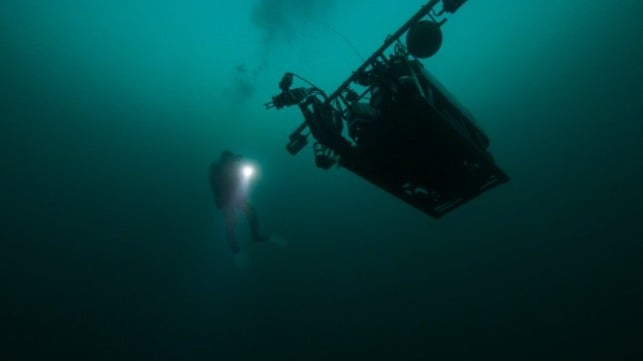Teaching Robots to Cooperate Underwater

[By Sigmund Bolme]
The launch of a new research center for robotics will provide increased knowledge about the sea with the help of underwater drones and robots. This could impact Norway’s international role as a major power at sea, says director Professor Asgeir J. Sørensen of the new NTNU-VISTA Centre for autonomous operations subsea.
“Our goal is to develop technology that in the short term can reduce the environmental footprint of industry at sea while reducing environmental risk. In the longer term, the technology could become part of a subsea infrastructure of great importance for monitoring and understanding the biology, chemistry, physics and dynamics in the ocean and on the seabed,” says Sørensen.
The Norwegian Academy of Science and Letters and Equinor are supporting NTNU with a grant of NOK 25 million for the new research center. The Departments of Marine Technology and Engineering Cybernetics are receiving the research funding of NOK 5 million a year for five years. NTNU is contributing additional financing.
Aiming to be part of the Ocean Space Centre
The center will benefit from infrastructure that has already been established in the port of Trondheim and hopes to become part of the infrastructure of the anticipated Ocean Space Centre. Sørensen believes that the new center can have an impact on Norway’s role internationally as a major power at sea.
“If we succeed in building infrastructure for digitization at sea and at the same time get different robot systems to work together underwater, on water and in the air, we’ll be able to exponentially increase the operational capabilities and economic viability for data capture in mapping and monitoring the ocean,” he says.
The center is one of several emerging from NTNU AMOS, which is led by Sørensen.
“The new center will significantly escalate the work and focus on marine robotics. It will also strengthen the research efforts that NTNU, SINTEF, Equinor and the Research Council of Norway have invested in laboratories and infrastructure associated with the AUR-Lab / Ocean lab, which will be an important part of the future Ocean Space Centre,” says Sørensen.
Autonomous robots open up completely new possibilities
Our knowledge of ocean areas is still limited. Detailed observations are far more challenging to carry out at sea than in the atmosphere.
Autonomous underwater vehicles – in collaboration with other robotic platforms on the Earth’s surface, in the air and in space – open up completely new possibilities for researching and monitoring the ocean.
By using autonomous underwater vehicles (AUVs), we can gain a better understanding of marine ecosystems that are crucial for value creation and management in the ocean.
AUVs also open up many new opportunities to develop the marine industry through robotic inspection and intervention. This is important for offshore wind energy production and aquaculture, as well as for safer installations, operations and maintenance for the offshore gas and oil industry.
Trondheim a world leader
A key focus area in the new center is how AUVs will navigate between specified installations, inspect the installations and possibly perform a task before returning to their own permanent parking station on the seabed for updates and maintenance.
The design of the equipment’s technology is based on solving non-linear differential equations of the hydrodynamics and mechanics that describe the movements of the robot, the installation or the ship.
The research group in Trondheim is a world leader in the development of the mathematical basis for a general snake robot, the construction of this type of robot and the development of control systems and autonomy for marine robotics.
“The centre’s ambitions are important for the long-term national utilization of our ocean resources while also maintaining environmental awareness as paramount,” says VISTA board chairman Ole M. Sejersted.
VISTA is a basic research program funded by Equinor in collaboration with the Norwegian Academy of Science and Letters. VISTA's goal is to develop an effective mutual collaboration between Equinor and Norwegian basic research environments.
This article appears courtesy of Gemini Research News and may be found in its original form here.
The opinions expressed herein are the author's and not necessarily those of The Maritime Executive.

